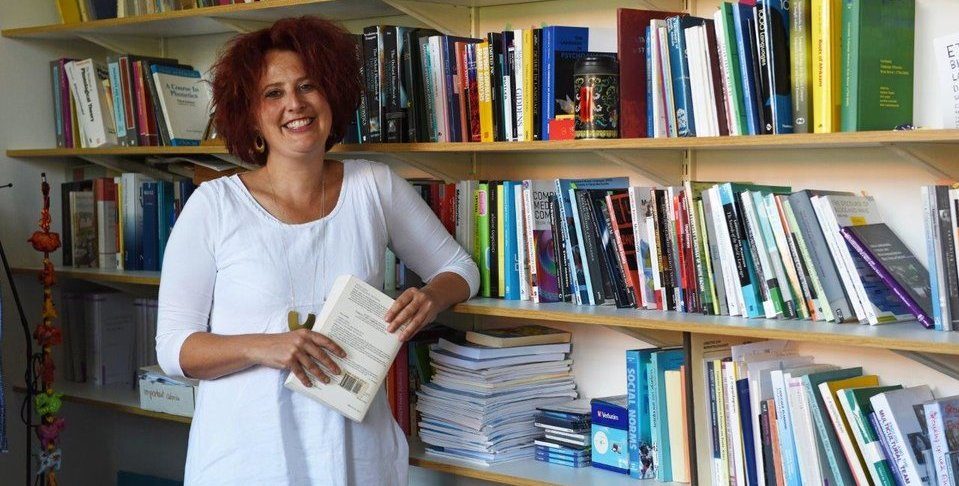
The rural Eastern Cape province of South Africa may not immediately leap out as an example of a melting pot of different cultures. However, according to Associate Professor Ana Deumert of the University of Cape Town, many of the small towns in this area are important examples of diversity of culture and linguistic mixing, processes that have intensified due to globalisation and increased international migration.
Speaking about this process, Deumert gives the example of one of her research participants, a Chinese trader from Fujian province who gave birth to her second child in South Africa.
“At first, she gave the child a Chinese name. But it was not long before she decided her son also needed an English name, because they are now living in South Africa.”
The mother, however, did not know many English names so she went out and asked the opinions of people in the community. The name eventually chosen for the child was Bruce.
“This choice reflects popular perceptions of China in South Africa. Everyone knows of China through popular culture like the Bruce Lee movies, so what is a Chinese boy in South Africa to be called? Bruce.”
More recently, the mother was looking for a suitable isiXhosa name for her son.
“Through this you can see the incremental steps in which people express a sense of local belonging, however transitory. It is not about abandoning the Chinese, but opening up to the local culture too.”
This story illustrates the ways in which the local and the global have become entangled in rural and peri-urban areas, not only in South Africa, but around the world. And understanding these entanglements is the aim of the the WUN-sponsored project Understanding Globalisation – Margins and Peripheries. This project, led by Deumert, seeks to study globalisation in the so-called margins of the world system: areas never before considered to be heavily affected by globalisation, but which are increasingly shaped by larger social and cultural processes.
However, the idea of margins and peripheries is not adopted uncritically in the project.
“We are also engaging critically with this very idea of margins and peripheries: what makes a space marginal? Is it helpful to look at the world in this way?” asks Deumert.
Deumert became interested in this line of research quite by chance. While she was working on a book on digital communication, she went to the Eastern Cape to do field work in rural villages.
“When I got there I was just struck by the mix of people from all over the world,” she says. As she drove through small, rural towns, she met people from China, Pakistan, Bangladesh, Senegal and Ghana and more. “I kept thinking how life in this small town seemed to be more diverse than what I experience in my daily life in Cape Town.” And because these towns are so small, the people living there must deal with one other all the time: they must deal with the different languages and cultures constantly.
“Let me just be clear that this is no utopia,” says Deumert. “These communities have their fair share of problems, but we did not see the kind of ‘closing off’ that sometimes happens in migrant communities. There are no niche economies, no Chinatowns, as we know from large urban centres such as Sydney or New York.”
Globalisation, migration and their socio-economic consequences are experienced across the urban and rural divide, yet very little research is focused on understanding these complex processes of globalisation in rural and peri-urban areas.
“This project has revealed how much is happening around globalisation in these ‘margins and peripheries,” says Deumert. “These rural areas may well teach those in the big cities a few lessons on adapting to diversity.”
So far, the project has been very fruitful, with one of the highlights being a WUN workshop, titled ‘Multilingualism and Mobilities: Understanding Globalisation’ hosted at the University of Cape Town in October. This workshop pulled together the work from two WUN sponsored projects, which touch on similar themes and issues.
“We had some very robust North-South discussions about, for example, southern theory, migration and the political economy of language and culture,” says Deumert.
“A few other highlights for me were presentatations by our PhD students. This included a presentation on labour, language and economics in the South African farming industry, and ‘first nation’ discourses in Khoisan language and activism, and presentation on language and place.”
Deumert notes that workshops like these are one of the most important opportunitues WUN offers. These kinds of international meetings and workshops funded by WUN allow researchers to expand their networks and interact with people they would probably not have otherwise met.
“This enables new forms of interdisciplinary collaboration,” says Deumert. “Precisely of the type we are now seeing in the Understanding Globalisation project.”
Read more about the WUN Understanding Globalisation – Margins and Peripheries project
